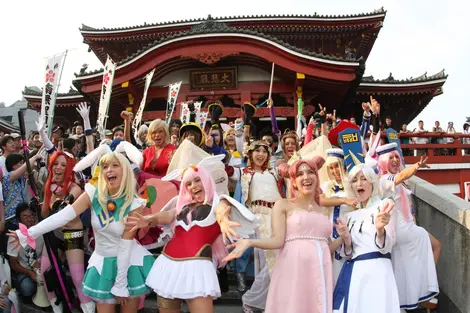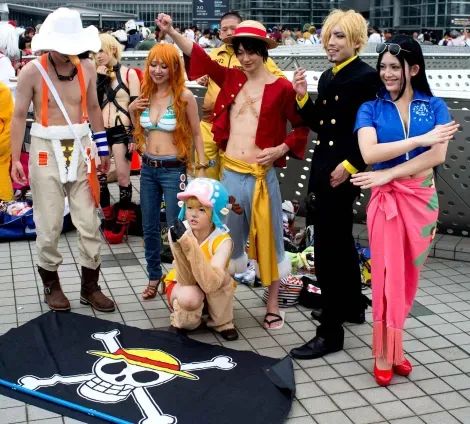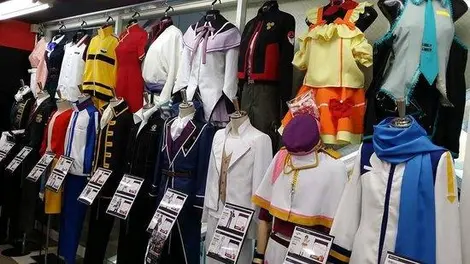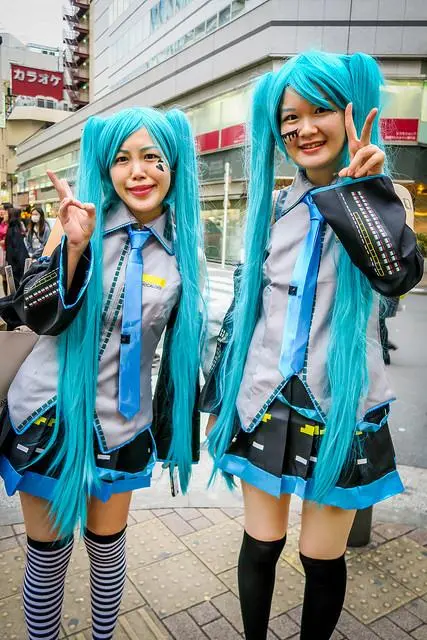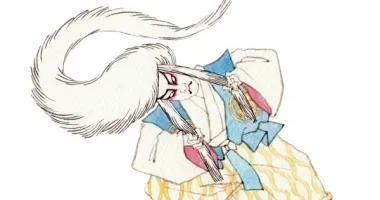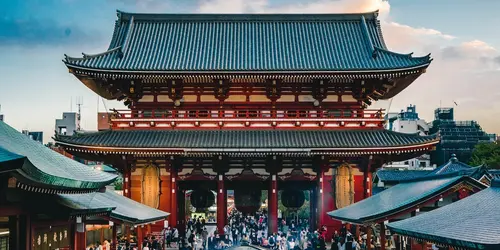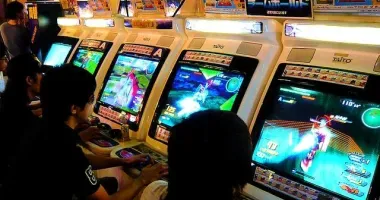Cosplay in Japan
- Published on : 06/05/2024
- by : R.A.
- Youtube
Japan is home to a vibrant and passionate cosplay culture. This phenomenon, which involves dressing up as characters from manga, anime or video games, has become much more than a simple pastime for many Japanese. A true form of artistic expression, cosplay in Japan attracts thousands of enthusiasts who meet regularly to celebrate their love of Japanese pop culture. Let's delve into this fascinating universe, where creativity and passion come together to bring the most iconic fictional heroes to life.
What is cosplay and where does it come from?
The term "cosplay" is a Japanese word coined from the English words "costume" and "play". The practice involves dressing up as characters from popular culture, mainly manga, anime and video games. Cosplayers don't just wear a costume, they seek to embody their favorite character by reproducing his or her attitudes, poses and expressions.
Although the term is Japanese, the origins of cosplay go back to the United States in the 1930s. The first recognized cosplayer is said to be Forrest J Ackerman, who appeared at the 1939 World Science Fiction Convention in a futuristic costume. However, it was in Japan that cosplay gained considerable momentum, becoming a veritable cultural phenomenon from the 1980s onwards.
The evolution and popularity of cosplay in Japan
Over the decades, cosplay has become an integral part of Japanese pop culture. Its evolution is closely linked to the rise of manga and anime, which conquered the Japanese public and then the whole world. Iconic series such as Naruto, One Piece and Dragon Ball have inspired generations of cosplayers, helping to popularize the practice.
Today, cosplay in Japan is no longer confined to conventions and specialized events. It has become a veritable social phenomenon, visible on the streets of districts such as Harajuku and Shibuya in Tokyo. These places have become meeting points for cosplayers, who parade proudly in their elaborate costumes, attracting the attention of passers-by and tourists alike.
The unique characteristics of Japanese cosplay
Japanese cosplay is distinguished by several unique aspects that make it a practice in its own right:
- Attention to detail: Japanese cosplayers are renowned for their attention to detail and perfectionism in costume design.
- Photography: In Japan, the emphasis is on photo shoots rather than stage performances, unlike in Europe.
- Crossplay: The practice of "crossplay" - playing a character of the opposite sex - is widespread and accepted.
- Group culture: Japanese cosplayers often form groups to represent complete character teams.
These characteristics make Japanese cosplay an art form in its own right, admired and imitated the world over.
How to become a cosplayer in Japan
To start cosplaying in Japan, you first need to choose a character you're passionate about. Then, you have several options for creating your costume:
- Handmade: Many cosplayers make their own costumes, which requires time, patience and skills in sewing and DIY.
- Buying costumes: There are many specialized stores, notably in the Akihabara or Nakano districts, where you can find ready-to-wear costumes.
- Custom orders: Some cosplayers call on professionals to create made-to-measure costumes.
Once the costume is ready, it's important to work on embodying the character. This involves studying the character's poses, expressions and personality, so as to be able to represent him or her faithfully.
Must-see events and venues for cosplayers in Japan
Japan offers many opportunities for cosplayers to show off their creations and meet other enthusiasts:
- Comiket: This gigantic bi-annual convention in Tokyo is one of the biggest gatherings of cosplayers in the world.
- Anime Fair: A major event for anime and cosplay fans.
- World Cosplay Summit: This international cosplay competition is held every year in Nagoya.
- Tokyo Dome: Regularly hosts cosplay events.
Outside these major events, neighborhoods such as Harajuku, Ikebukuro and the Akihabara district are popular spots for cosplayers to have their photo taken or simply stroll around in costume.
The cultural and economic impact of cosplay in Japan
Cosplay has a significant impact on Japanese culture and economy. It contributes to the worldwide popularity of manga and anime, reinforcing Japanese soft power. Economically, cosplay generates significant revenue through :
- Sales of costumes, accessories and materials
- Organization of events and conventions
- Tourism, attracting many foreign fans
- Professional opportunities for talented cosplayers (models, promotions, etc.)
Cosplay has also become a vehicle for international cultural exchange, promoting understanding and appreciation of Japanese culture abroad.
Cosplay challenges and controversies in Japan
Despite its popularity, cosplay in Japan faces certain challenges and controversies:
- Social perception: Although more accepted than in the past, cosplay can still be viewed negatively by some, especially the older generations.
- Pressure and harassment: Some cosplayers, especially women, may be subjected to harassment or inappropriate behavior.
- High costs: Creating quality costumes can represent a significant financial investment.
- Copyrights: The question of copyrights sometimes arises, especially for professional cosplayers.
Despite these challenges, cosplay continues to thrive in Japan, constantly evolving and attracting new enthusiasts. This practice, which combines creativity, passion and community, remains a fascinating aspect of Japanese pop culture, reflecting the country's ability to reinvent and export its culture in unique ways.
Whether you're a long-time enthusiast or simply curious, cosplay in Japan offers a unique cultural experience. Don't hesitate to immerse yourself in this colorful universe during your next trip to the Land of the Rising Sun, whether by taking part in a major event like Comiket or exploring Tokyo's trendy districts. And to find out more about the many facets of this fascinating culture, take a look at our guide to All About Japanese Pop Culture.




